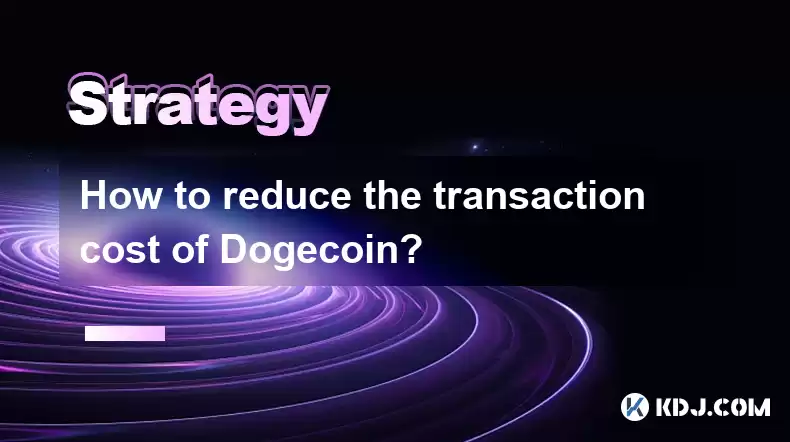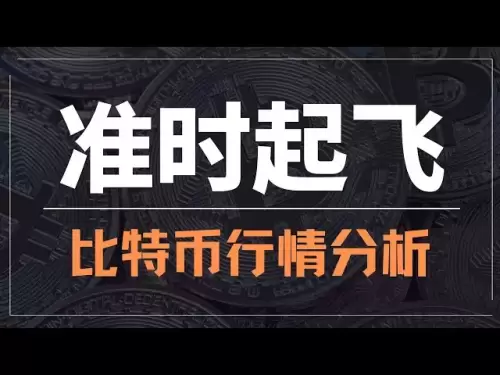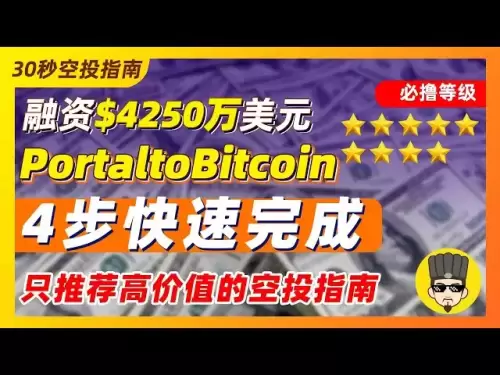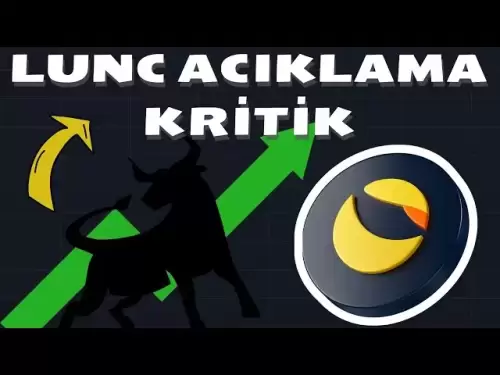-
 Bitcoin
Bitcoin $117300
1.93% -
 Ethereum
Ethereum $3866
5.21% -
 XRP
XRP $3.109
3.81% -
 Tether USDt
Tether USDt $1.000
0.01% -
 BNB
BNB $781.5
1.52% -
 Solana
Solana $173.0
2.95% -
 USDC
USDC $0.9998
0.00% -
 Dogecoin
Dogecoin $0.2181
6.31% -
 TRON
TRON $0.3403
0.93% -
 Cardano
Cardano $0.7683
3.91% -
 Hyperliquid
Hyperliquid $40.08
5.09% -
 Sui
Sui $3.742
7.38% -
 Stellar
Stellar $0.4152
4.69% -
 Chainlink
Chainlink $18.40
10.03% -
 Bitcoin Cash
Bitcoin Cash $580.6
2.21% -
 Hedera
Hedera $0.2543
4.25% -
 Ethena USDe
Ethena USDe $1.001
-0.01% -
 Avalanche
Avalanche $22.94
3.52% -
 Litecoin
Litecoin $121.8
2.24% -
 UNUS SED LEO
UNUS SED LEO $8.955
-0.41% -
 Toncoin
Toncoin $3.330
3.03% -
 Shiba Inu
Shiba Inu $0.00001270
2.97% -
 Uniswap
Uniswap $10.34
6.42% -
 Polkadot
Polkadot $3.805
3.86% -
 Dai
Dai $1.000
0.01% -
 Bitget Token
Bitget Token $4.429
1.80% -
 Cronos
Cronos $0.1495
4.65% -
 Monero
Monero $255.6
-9.08% -
 Pepe
Pepe $0.00001096
4.40% -
 Aave
Aave $282.9
7.85%
How to reduce the transaction cost of Dogecoin?
To minimize Dogecoin transaction costs, set lower fees, time transactions during off-peak hours, use SegWit wallets, batch transactions, and choose the right wallet.
Apr 17, 2025 at 10:35 pm

Understanding Dogecoin Transaction Costs
Dogecoin, like many cryptocurrencies, involves transaction costs that users must pay to process their transactions on the blockchain. These costs, known as transaction fees, are essential for incentivizing miners to validate and include transactions in the blockchain. Reducing these costs can significantly enhance the user experience, especially for those who frequently transact with Dogecoin. In this article, we will explore various strategies to minimize Dogecoin transaction costs effectively.
Factors Influencing Dogecoin Transaction Fees
Several factors determine the transaction fees associated with Dogecoin transactions. The size of the transaction in bytes, network congestion, and the priority level set by the user all play a role in determining the cost. For instance, larger transactions that require more space on the blockchain will typically incur higher fees. Similarly, during periods of high network activity, miners may prioritize transactions with higher fees, leading to increased costs for users.
Setting Lower Transaction Fees
One of the most straightforward methods to reduce Dogecoin transaction costs is by setting lower transaction fees manually. Dogecoin wallets usually allow users to customize their transaction fees. Here’s how you can do it:
- Open your Dogecoin wallet.
- Navigate to the settings or preferences section.
- Look for an option related to transaction fees or miner fees.
- Adjust the fee to a lower amount, but ensure it is still sufficient for miners to process your transaction during average network conditions.
It’s important to strike a balance when setting fees. Too low a fee might result in delayed or unprocessed transactions, while a slightly higher fee can ensure faster confirmation times.
Timing Your Transactions
Another effective strategy for reducing Dogecoin transaction costs involves timing your transactions. Network congestion can significantly impact transaction fees. During peak times, such as when there is a surge in trading activity or when major news events affect the cryptocurrency market, transaction fees tend to be higher. Conversely, during off-peak hours, you can often send transactions with lower fees and still achieve reasonable confirmation times.
To optimize your transaction timing:
- Monitor Dogecoin network activity using blockchain explorers or transaction fee estimators.
- Schedule your transactions during periods of lower network congestion, typically during late-night hours or early mornings in your time zone.
Using SegWit-Enabled Wallets
Segregated Witness (SegWit) is a protocol upgrade that can help reduce transaction fees by optimizing the way data is stored on the blockchain. Dogecoin implemented SegWit in 2019, allowing users to benefit from reduced transaction sizes and, consequently, lower fees. To take advantage of this feature, you need to use a SegWit-enabled Dogecoin wallet.
Here’s how to switch to a SegWit wallet:
- Research and select a reputable Dogecoin wallet that supports SegWit.
- Download and install the wallet on your device.
- Transfer your existing Dogecoin to the new SegWit wallet.
- Ensure that you use the SegWit address format (starting with 'D' instead of 'D') when sending or receiving Dogecoin.
By using SegWit, you can reduce the size of your transactions, which in turn can lead to lower fees without compromising on transaction speed or security.
Batch Transactions
For users who need to make multiple transactions, batching can be an effective way to reduce overall transaction costs. Batching involves combining multiple transactions into a single transaction, thereby reducing the total number of transactions that need to be processed and the associated fees.
To batch transactions:
- Identify the recipients and amounts for each transaction.
- Use a wallet that supports batch transactions or a service that can facilitate this process.
- Enter the details for all transactions into a single transaction request.
- Confirm and send the batched transaction.
By batching transactions, you can save on fees and streamline your transaction process, especially if you are sending Dogecoin to multiple addresses regularly.
Choosing the Right Wallet
The choice of wallet can also impact your Dogecoin transaction costs. Different wallets have varying fee structures and capabilities. Some wallets offer more granular control over fees, while others might automatically set higher fees to ensure quick confirmations.
When selecting a Dogecoin wallet, consider the following factors:
- Fee customization: Look for wallets that allow you to set your own transaction fees.
- SegWit support: Ensure the wallet supports SegWit to benefit from lower transaction sizes and fees.
- Batch transaction support: If you frequently send multiple transactions, a wallet that supports batching can be beneficial.
- User reviews and reputation: Choose a wallet with positive user feedback and a good reputation for reliability and security.
By choosing the right wallet, you can optimize your transaction costs and enhance your overall experience with Dogecoin.
Frequently Asked Questions
Q: Can I completely avoid transaction fees when using Dogecoin?
A: No, it is not possible to completely avoid transaction fees when using Dogecoin. These fees are necessary to incentivize miners to validate and include transactions in the blockchain. However, you can minimize these fees by using the strategies outlined in this article.
Q: How do I know if my transaction fee is too low?
A: If your transaction fee is too low, your transaction might take longer to be confirmed or may not be confirmed at all. You can use blockchain explorers or transaction fee estimators to gauge the appropriate fee level for your transaction.
Q: Are there any risks associated with using SegWit for Dogecoin transactions?
A: SegWit is a well-established and secure protocol upgrade for Dogecoin. However, as with any cryptocurrency transaction, it is essential to use reputable wallets and follow best practices for securing your funds. There are no inherent risks associated with using SegWit specifically for Dogecoin transactions.
Q: Can I change the transaction fee after sending a Dogecoin transaction?
A: Once a Dogecoin transaction is sent, the transaction fee cannot be changed. It is crucial to set an appropriate fee before sending the transaction to ensure it is processed in a timely manner.
Disclaimer:info@kdj.com
The information provided is not trading advice. kdj.com does not assume any responsibility for any investments made based on the information provided in this article. Cryptocurrencies are highly volatile and it is highly recommended that you invest with caution after thorough research!
If you believe that the content used on this website infringes your copyright, please contact us immediately (info@kdj.com) and we will delete it promptly.
- Bitcoin Reserve, Gold Revaluation, Congress Considers: A New Era for US Financial Strategy?
- 2025-08-08 04:30:12
- KAITO's Momentum: Can It Reclaim Support Amidst Social Media Scrutiny?
- 2025-08-08 04:30:12
- Pi Coin's dApp and AI Potential: Building a Decentralized Future
- 2025-08-08 02:30:12
- Ruvi AI Takes the Lead: Outshining Dogecoin on CoinMarketCap
- 2025-08-08 02:50:12
- Cryptos Under $1: Is Ripple Still the King?
- 2025-08-08 03:50:12
- Cold Wallet, Bonk Price, ICP Price: Navigating the Crypto Landscape in 2025
- 2025-08-08 03:56:12
Related knowledge

How to avoid common crypto investment mistakes?
Jul 13,2025 at 01:35am
Understanding the Risks of Crypto InvestmentInvesting in cryptocurrency can be highly rewarding, but it also comes with significant risks. One of the ...

What is a long-short crypto strategy?
Jul 15,2025 at 10:56am
Understanding the Basics of a Long-Short Crypto StrategyA long-short crypto strategy is an investment approach where traders simultaneously take long ...

What is a long-short crypto strategy?
Jul 11,2025 at 01:28pm
Understanding the Basics of Long-Short Crypto StrategyA long-short crypto strategy is an investment approach where traders take both long and short po...

How to use the RSI indicator for crypto?
Jul 12,2025 at 03:56pm
Understanding the RSI Indicator in Cryptocurrency TradingThe Relative Strength Index (RSI) is a momentum oscillator used to measure the speed and chan...

Is copy trading a good strategy for crypto beginners?
Jul 12,2025 at 08:28am
Understanding Copy Trading in the Cryptocurrency MarketCopy trading is a strategy where novice traders replicate the trades of experienced investors a...

How to build a crypto portfolio with $1000?
Jul 13,2025 at 08:14pm
Understanding the Basics of Cryptocurrency InvestmentBuilding a crypto portfolio with $1000 starts with understanding the fundamentals of cryptocurren...

How to avoid common crypto investment mistakes?
Jul 13,2025 at 01:35am
Understanding the Risks of Crypto InvestmentInvesting in cryptocurrency can be highly rewarding, but it also comes with significant risks. One of the ...

What is a long-short crypto strategy?
Jul 15,2025 at 10:56am
Understanding the Basics of a Long-Short Crypto StrategyA long-short crypto strategy is an investment approach where traders simultaneously take long ...

What is a long-short crypto strategy?
Jul 11,2025 at 01:28pm
Understanding the Basics of Long-Short Crypto StrategyA long-short crypto strategy is an investment approach where traders take both long and short po...

How to use the RSI indicator for crypto?
Jul 12,2025 at 03:56pm
Understanding the RSI Indicator in Cryptocurrency TradingThe Relative Strength Index (RSI) is a momentum oscillator used to measure the speed and chan...

Is copy trading a good strategy for crypto beginners?
Jul 12,2025 at 08:28am
Understanding Copy Trading in the Cryptocurrency MarketCopy trading is a strategy where novice traders replicate the trades of experienced investors a...

How to build a crypto portfolio with $1000?
Jul 13,2025 at 08:14pm
Understanding the Basics of Cryptocurrency InvestmentBuilding a crypto portfolio with $1000 starts with understanding the fundamentals of cryptocurren...
See all articles

























































































